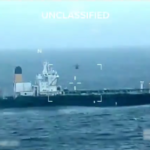
The Ministry of Ecological Transition (Miteco) and the State Meteorological Agency have come forward this Saturday with the serious accusations and lies made by the President of the Valencian Government, Carlos Mazón, during his appearance in the Corts this Friday in which the self-criticism and the assumption of responsibilities were null and void and in which he dedicated himself to offloading much of the blame for his disastrous management to other entities dependent on the Government such as Aemet itself or the Júcar Hydrographic Confederation (CHJ). In fact, the AEMET considers that around 5:30 p.m. on October 29 there was enough evidence to have alerted the population of the flood; finally the mass message was sent two and a half hours later.
One of the most flagrant accusations launched by Mazón this Friday in the Cortes, according to Miteco, is the one referring to the moment of his transfer to the Integrated Operational Coordination Center: “When I was warned that the situation at the Forata dam was getting worse, I I went to the Emergency Coordination Center where Cecopi was established and working. Around 7:45 p.m., at Cecopi, the Confederation reported that the situation in Forata may worsen,” Mazón said this Friday.
However, Miteco sources have assured that at 5:26 p.m. the Cecopi is already talking about the critical situation of the Forata dam and they are beginning to consider taking action. At 5:36 p.m. there was already talk of the possible bursting of the reservoir, with Mazón untraceable and in the middle of lunch with a Valencian journalist at the Ventorro restaurant.
This information fits with the information advanced by this newspaper regarding the 62 emails that the CHJ sent to the Civil Protection of the Generalitat while Mazón was eating. Among them, there is one at 5:04 p.m. in which scenario 2 is declared, which implies the risk of breakage or very serious breakdown. Still at 5:23 p.m., at 5:54 p.m. and at 6:33 p.m. there are new warnings due to flow outflow.
Notices from the Júcar Hydrographic Confederation
As this editorial team already reported, after 6:00 p.m. the president of the Júcar Hydrographic Confederation, Miguel Polo, already put on the table the possibility of sending “massive alerts to the entire population”, about two hours before 8:00 p.m. :12 hours when the Es-alert system was finally activated, sending the warning message to all mobile phones in the province of Valencia.
Taking into account that, according to the sources consulted, the risk of breaking the Forata dam began to be mentioned in the CECOPI, the version given by Mazón this Friday in Les Corts does not make sense. “This is the reason – the possible breakage of the Forata dam – and no other, why CECOPI considers the possibility of using the ES-ALERT system for mass notification to the population,” Mazón noted in his speech.
To support his version, and justify sending the message at 8:11 p.m., the president assured that it was when “the Secretary of State for the Environment, Hugo Morán, from Colombia, communicated by telephone to the Minister of Justice and the Interior that It cannot be guaranteed that the Forata dam will resist,” when CECOPI decided to “send the massive message.” Mazón placed Morán’s call at 8 p.m. However, AEMET sources assure that two and a half hours earlier the same information had already been discussed at that meeting.
In his intervention, Mazón tried to twist information published by the AEMET during those hours to justify the chain of errors that led him to send the massive message after eight in the afternoon, when several municipalities had already been flooded. This Saturday sources from this organization have come forward to deny some of the accusations made by the Valencian Government.
Mazón intervened on October 29 at 11:46. In that statement he reviewed the evolution of the alerts at that time. The president assured that “the storm is moving to the Serranía de Cuenca, so it is expected that its intensity will decrease around 6 p.m.,” he noted.
Valencian public television broadcast this intervention live. After Mazón’s words, the next to speak was José Ángel Núñez, the head of Climatology at the State Meteorological Agency (Aemet) in the Valencian Community. In his speech this Friday, he alluded to this technician to ensure that when he intervened he assured that the storms were “going to move towards the north” and that “the red alert is until six in the afternoon.” “I myself, with identical information, warned of the weather alert and recommended caution and patience in the face of the situation, as well as following the recommendations of the Emergency Center,” he added when speaking for more than two hours in Les Corts.
AEMET red alert
After 7:30 in the morning on October 29, AEMET raised the warning level to red in the northern interior area and the southern coast of Valencia. That same morning Mazón assured that the storm was going to move “to the Serranía de Cuenca, so it is expected that around 6 p.m. it will decrease in intensity.” These statements were broadcast on Valencian public television. They were held at 11:46 a.m.
After those words, the next to intervene on public television was José Ángel Núñez, the head of Climatology at the State Meteorological Agency (Aemet) in the Valencian Community. One of the few people who was cited by the president in his speech that Friday to assure that he relied on his statements to justify that the storms were “going to move north” and that “the red alert is until six p.m”.
AEMET considers that Mazón manipulated Núñez’s intervention, since the leader of the Valencian PP at no time took into account that the agency’s spokesperson also warned at 11:50 on October 29 in that same interview of the consequences of DANA in the ravines located in municipalities where it was not raining. “These cold drop situations are the most dangerous because when it rains in the mountains or mountains, all the rivers, ravines, and ravines reach swollen areas where it is not raining,” he also explained in that interview.
Despite these words, this Friday Mazón insisted that the AEMET only warned of the forecasts for “torrential rains”, but not of “brutal floods”. Regarding these words, the agency points out that the surveillance of ravines and river beds is not within its powers. Furthermore, they add that this institution is responsible for warning, not for warning of the consequences that the events they are warning about may cause. However, they also distance themselves from Mazón’s words that placed the storm in the Serranía de Cuenca. They claim that Núñez never made that prediction.
Given the delay in issuing the massive alert, sources from the Ministry of Ecological Transition explain that the president of the Júcar Hydrographic Confederation began to call mayors of areas affected by the flood in a private capacity.
Chronology, according to sources present at the CECOPI on October 29
17 a 18h: Nothing was decided at CECOPI, according to sources present at the meeting.
5:30 p.m.: Talk is beginning about the risk of the Forata dam breaking. Warnings for river overflow are also cited, these sources add.
18 a 19h: CECOPI was paralyzed. There were no interventions, according to the sources consulted by elDiario.es.
19.12h: The Es-Alert system is beginning to be considered. There is debate about what to include in the content of the message, these same sources influence.
19:45h: Carlos Mazón arrives at the L’Eliana Emergency Coordination Center around that time.
20:11 h: The Generalitat sends an SMS alert to residents so that they do not go out into the streets or move around the province.
Source: www.eldiario.es

